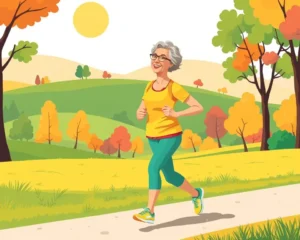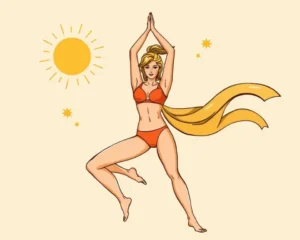As we gracefully age, maintaining an active lifestyle becomes paramount for sustained health and vitality. However, the fountain of youth isn’t just about relentless activity; it’s about strategic recovery. Rest days are not a sign of weakness or inactivity, but rather an essential component of any senior fitness program, allowing the body to rebuild, repair, and rejuvenate. Neglecting rest can lead to overtraining, injuries, and hinder overall progress.
Why Rest Days Matter for Seniors
Rest days are more than just taking a break from exercise; they are a vital part of the training cycle, especially for seniors. As we age, our bodies undergo physiological changes that affect recovery time, making rest even more critical.
Physical Recovery: Rebuilding Muscle and Tissue
Exercise, especially strength training, creates microscopic tears in muscle fibers. Rest days provide the necessary time for these muscle tissues to repair and rebuild, leading to increased strength and resilience. This process, known as muscle protein synthesis, tends to slow down with age, underscoring the importance of adequate rest for seniors.
Injury Prevention: Avoiding Wear and Tear
Rest days act as a shield against injuries by preventing the wear and tear that can accumulate from continuous physical activity. Seniors are more susceptible to injuries due to decreased bone density, reduced muscle mass, and slower reaction times. Incorporating rest into your routine can significantly lower the risk of strains, sprains, and fractures. Allowing at least 48 hours between workouts targeting the same muscle group is generally recommended.
Mental Rejuvenation: Clearing the Fog
The benefits of rest extend beyond the physical realm, offering a “spa day for your brain”. Regular rest improves cognitive function and mood in older adults, reducing mental fatigue. This mental clarity is crucial for maintaining focus, memory retention, and overall well-being. Engaging in mindfulness practices like meditation or gentle yoga during rest days can further enhance mental recovery.
Immune System Support: Fortifying Your Defenses
A well-rested body is better equipped to support a robust immune system. Rest contributes to the body’s ability to fend off illnesses and infections, a crucial consideration for seniors who may be more vulnerable to health challenges.
Enhancing Sleep Quality: A Virtuous Cycle
Consistent rest days can positively impact sleep patterns. Seniors who prioritize rest are more likely to enjoy better sleep quality, which is vital for overall health and vitality.
The Risks of Skipping Rest Days: Overtraining
Overtraining occurs when the body is pushed beyond its capacity to recover, leading to a decline in performance and potential health issues. For seniors, the risks of overtraining are amplified due to age-related physiological changes.
Physical Consequences: Fatigue, Soreness, and Injury
- Persistent fatigue: Overtraining can lead to chronic fatigue that doesn’t improve with regular sleep.
- Increased muscle soreness: Muscles may remain sore for extended periods, hindering daily activities.
- Elevated risk of injury: Overtraining weakens the body, making it more susceptible to injuries like strains, sprains, and stress fractures.
- Weakened immune system: Excessive exercise can suppress the immune system, increasing vulnerability to infections.
Mental and Emotional Toll: Irritability and Loss of Motivation
- Mood disturbances: Overtraining can lead to irritability, anxiety, and even depression.
- Decreased motivation: Loss of interest in activities that were once enjoyable is a common sign of overtraining.
- Cognitive impairment: Overtraining can affect cognitive functions like focus and memory.
Finding Your Perfect Rest Day Balance
There’s no one-size-fits-all approach to rest days; it’s about finding your sweet spot. Some seniors thrive with one rest day a week, while others need two or three. The key is consistency and listening to your body.
Listen to Your Body: Recognizing the Signals
Paying attention to your body’s signals is crucial for determining your individual rest needs. Signs that you may need more rest include:
- Increased soreness or stiffness
- Decreased performance
- Persistent fatigue
- Difficulty sleeping
- Increased irritability
- Loss of appetite
Active vs. Passive Rest: Choosing the Right Approach
- Active rest: Involves light activities like walking, swimming, or gentle yoga to promote blood flow and reduce muscle stiffness.
- Passive rest: Involves complete rest, such as lying down, reading, or meditating, to allow the body to fully recover.
The choice between active and passive rest depends on your individual preferences and needs. Active rest can be beneficial for reducing muscle soreness and promoting circulation, while passive rest provides a deeper level of recovery.
Sample Rest Day Activities: Rejuvenate Your Body and Mind
- Gentle stretching: Improves flexibility and reduces muscle tension.
- Yoga or Tai Chi: Enhances balance, flexibility, and relaxation.
- Walking: Promotes cardiovascular health and reduces stress.
- Reading: Stimulates the mind and provides relaxation.
- Meditation: Reduces stress and improves mental clarity.
- Spending time in nature: Boosts mood and reduces stress.
- Engaging in hobbies: Provides enjoyment and relaxation.
Integrating Rest Days into Your Fitness Routine
Incorporating rest days into your fitness routine requires careful planning and consideration of your individual needs and goals.
Scheduling Rest Days: Planning for Success
- Plan rest days in advance: Treat rest days as important appointments and schedule them into your calendar.
- Vary your rest days: Experiment with different rest day schedules to find what works best for you.
- Be flexible: Adjust your rest day schedule as needed based on your body’s signals.
Working with Professionals: Tailoring Your Approach
Consulting with a healthcare provider or a qualified fitness professional can help you create a safe and effective exercise and rest routine that meets your specific needs and goals.
Nutrition’s Role in Recovery: Fueling Your Body for Repair
Nutrition plays a vital role in the recovery process, especially as seniors need more protein to support muscle repair. Consuming a balanced diet with adequate protein, healthy fats, and carbohydrates can provide the body with the fuel it needs to rebuild muscles after a workout.
Key Nutrients for Recovery:
- Protein: Essential for muscle repair and growth.
- Carbohydrates: Replenish glycogen stores, providing energy for muscles.
- Healthy fats: Support hormone production and reduce inflammation.
- Vitamins and minerals: Play a crucial role in various bodily functions, including muscle recovery.
The Takeaway: Embrace Rest, Embrace Strength
Rest days are not a luxury but a necessity for seniors seeking to maintain an active and healthy lifestyle. By understanding the importance of rest, listening to your body, and incorporating rest days into your fitness routine, you can unlock the full potential of your workouts and enjoy a stronger, healthier, and more fulfilling life. Embrace rest days as your secret weapon, and pave the way for a golden era of fitness.







